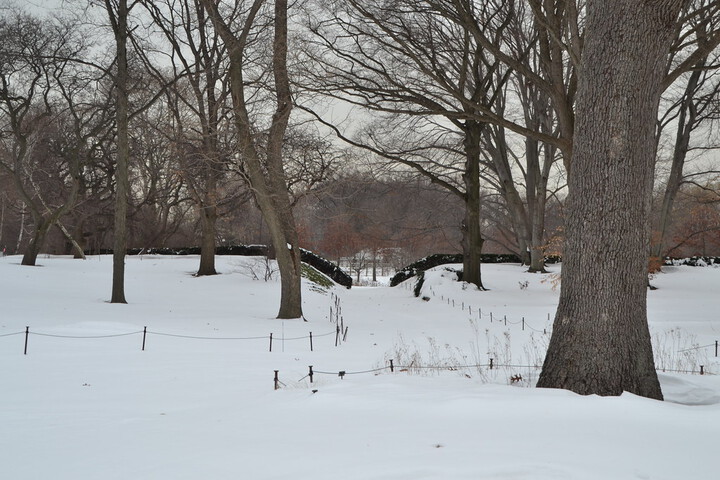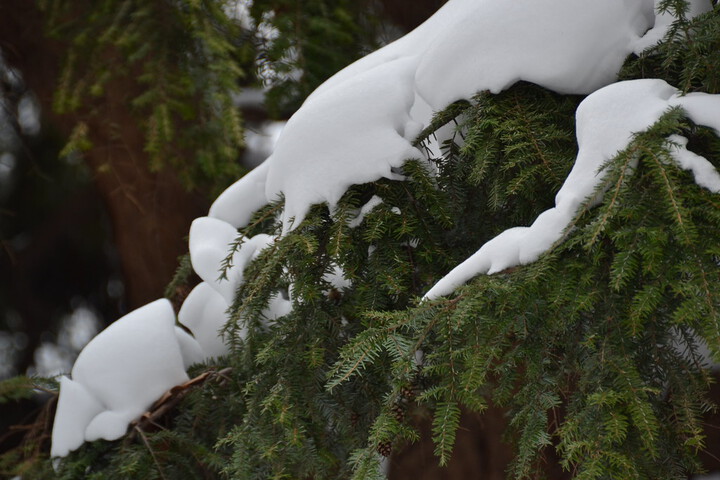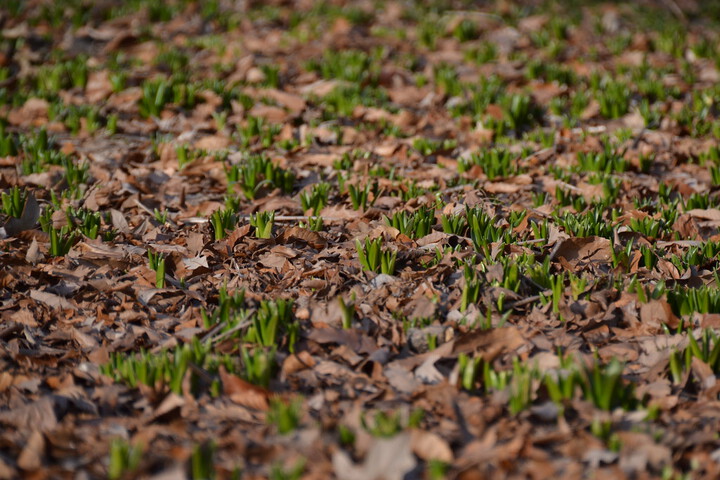Last week’s storm brought 27 inches of snow on the heels of an unusually warm spell in Brooklyn. Many plants were responding to the warmth as if it were early spring. Bluebell Wood, for instance, was covered in green shoots Friday night. Twenty-four hours later, all this new growth was buried by snow. How do plants handle such weather whiplash?

Turns out, many plants do pretty well under snow cover. “Snow can act as a blanket, protecting new growth from extreme temperatures and wind while keeping the plants moist,” says Brooklyn Botanic Garden curator Michael Mauro, who tends Bluebell Wood.
Fresh snow provides good insulation, almost like a fluffy down jacket. It creates pockets of trapped air that hold in heat. When deep enough, snow can prevent soil from freezing and damaging roots.
Many trees and other plants are well adapted to snowy conditions. BBG arborist Chris Roddick points out that under persistent snow cover, trees can grow new roots using stored energy reserves. And some trees have ways to avoid bearing heavy snow loads. The branches of conifers like the Nordmann fir (Abies nordmanniana), for example, catch snow. “Then, as more snow falls, the new snow will spill off like it's sliding down a ski slope,” says Roddick.
Still, the weight of a big snowfall can cause heavy branches of some trees to snap and fall. Depending on its density, snow can weigh 15 or 20 pounds per cubic foot. Rapidly melting snow can also run onto exposed soil and freeze. Melting began soon after Jonas passed and continues as the weather has warmed again, but cold temperatures are sure to return.

The earlier mild temperatures may have put the bluebells and other shoots in a tenuous position. “Because we had such an unusually warm fall and early winter, many plants are ahead of schedule,” says Mauro. Bluebells typically emerge late February through March, not in January, he says.

“If we have a cold spell with wind and there's no snow covering the shoots, the new growth may experience what’s called winter burn—the winds draw moisture from the leaves, and since the ground is frozen, more moisture is unavailable,” says Mauro.
Winter has really only just begun, and it’s not clear what’s coming next. “We won't really see the effect of this strange weather pattern until much later in the year,” says director of Horticulture Ronnit Bendavid-Val. “Spring will no doubt be beautiful one way or another, even if we do see some damage or there are less blooms. Plants want to grow, and they will find a way to do so.”